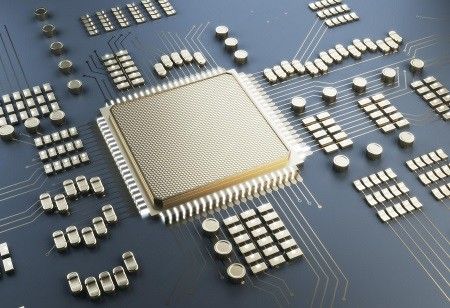
The semiconductor journey in India has been that of late entries and late booms. Since the 1960s and throughout the early 2000s, strategic plans by major international firms such as Fairchild, Texas Instruments, Motorola and Intel to establish local chip factories proved never to come to fruition, due to suppressive policies and governmental inertia. Nevertheless, India has changed gears dramatically in the last couple of years.
The India Semiconductor Mission (ISM) was launched, signifying a turning point. The program has resulted in ten successful semiconductor projects that span a wide range of areas high-volume fabs, heterogeneous packaging, compound semiconductors such as SiC, and OSAT facilities, which represent ₹1.60 lakh crore (equivalent to US 18.2 billion) in invested capital. The domestic semiconductor market of India has a valuation of approximately USD 38 billion in the present but is expected to grow to 100-110 billion by the year 2030 with a growth rate of about 13 percent.
“The Indian automotive industry has emerged as a global powerhouse, with 2024 showcasing remarkable progress in electric vehicle adoption, safety standards, and groundbreaking innovations like Software-Defined Vehicles (SDVs) and India’s competitive edge lies in its dynamic talent pool, world-class manufacturing capabilities, and progressive regulatory framework.” - Hitesh Garg, VP & India Country Manager, NXP Semiconductors
India is not just theorizing, but there are plans being implemented in several states and industries. In Uttar Pradesh, Union Cabinet has approved the HCL-Foxconn joint venture who is set to establish a plant in and around Jewar Airport. When the facility becomes operational in 2027, the facility will manufacture 20,000 wafers monthly and 36 million display driver devices on a yearly basis. Meanwhile, a fabless Larsen and Toubro-supported startup, L&T Semiconductor Technologies (LTSCT), has declared its intention to build a $10 billion fab by 2027 with the potential of up to 90 percent government support should it meet its intermediate revenue targets.
Also Read: Gadkari Urges Sugar Industry to Tap Ethanol, Hydrogen
In recent disclosures, Union Minister Ashwini Vaishnaw announced that India is also constructing a commercial silicon fab with a scale of 50,000 wafer starts per month. This disclosure strengthens the Indian commitment to production at scale. States are also upping the ante and Odisha has signed MoUs to the tune of 2655 crore in semiconductor projects including PCB and electronics companies. At the academic level, IIT (ISM) Dhanbad presented its APEEC1 IC at Semicon India 2025, as India increasingly has chip design and R&D ambitions.
“Chips are digital diamonds. The day is not far when India’s smallest chip will drive the world’s biggest change.” - PM Narendra Modi
The ecosystem of semiconductors in India is still flourishing, characterized by innovation, investment and strategic growth. Quad Quantum Pvt Ltd has awarded a landmark grant of 45 lakh to Sardar Patel University (SPU) to boost academic capacity in semiconductor science, assist with scholarships, training, and an R&D project on semiconductor device thermal stress reliability under the India Semiconductor Mission (ISM).
At the industrial infrastructure level, CN Water is also making a measured step forward with entering ultrapure water (UPW) systems, an essential enabler to semiconductor fabs. Another important part of the semiconductor supply chain in India that has been largely ignored but remains crucial is highlighted in this venture.
“I believe India has the ambition, talent, deep expertise, and scalability to become a true global player.” - Kurt Sievers, President & CEO, NXP Semiconductors
In the meantime, Odisha is reinventing itself as a regional semiconductor player with signed MoUs valued at 2,655 crore with companies such as TopTrack Hi-Tech PCB, and Sancode Technologies. Such partnerships, complemented by schemes such as the Chips to Startup (C2S) programme, are focused on talent skilling over embedded design training co-operatively with IIT Bhubaneswar. India also made its first 32-bit indigenous processor (named Vikram) with VSSC developed and manufactured at the SCL of ISRO. Its applications in satellites and rockets have applications in defense, high-tech automotive systems and in energy.
“Today, semiconductor demand from India is something like $40 billion, and in the next few years, it is going to be $100 billion.” - Nivruti Rai, MD & CEO, Invest India
Government is currently hastening through the next stage, ISM 2.0 at the policy level. It is anticipated that a cabinet note on increased incentives and simplified approvals will be available by October, and this will indicate that it remains committed to speed up the process of semiconductor development.
Also Read: GlobalLogic, Ericsson Deploy Private 5G at Hitachi Rail
India is changing into a semiconductor consumer to a manufacturing competitor. Investment in design, assembly, packaging, and fabrication is being opened by supportive policy frameworks including the PLI, DLI, and ISM schemes and state-level incentives. International companies are now pursuing joint ventures with domestic participants, which are indicative of trust in India to maintain a semiconductor value chain.
“India needs at least 10 more semiconductor chip fabrication companies to set up shop in India in the next decade.” - Ajit Manocha, President & CEO, SEMI
There are still obstacles to overcome- building up of solid infrastructure, a talented workforce, and having to compete with the well-established semiconductor clusters of East Asia. However, with R&D innovations such as the Shakti microprocessor, modernization of SCL Chandigarh and heavy investment by the private sector, India is making a case to become a reliable player in global supply chains. As the world semiconductor is projected to reach a value of one trillion by 2030, the current growth rate of India can assist in making it attain a significant portion of the market along with gaining popularity as a reliable source of innovation and production.
We use cookies to ensure you get the best experience on our website. Read more...